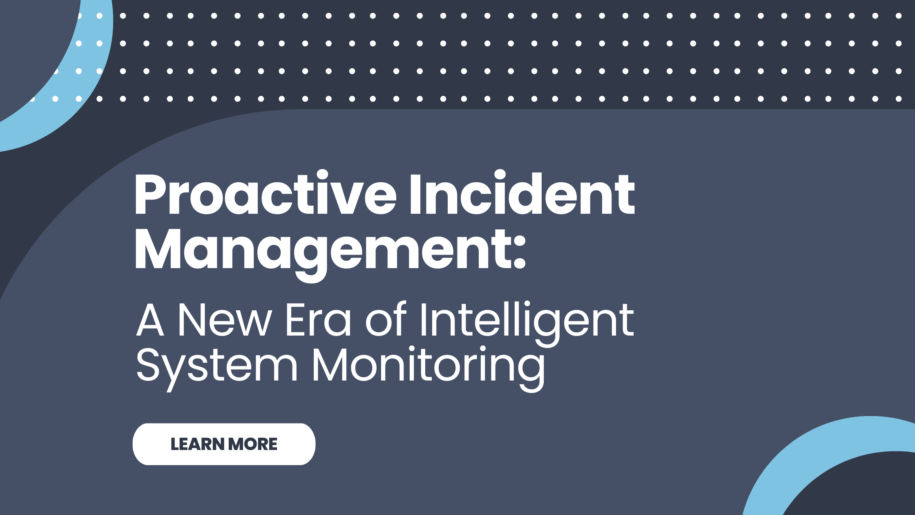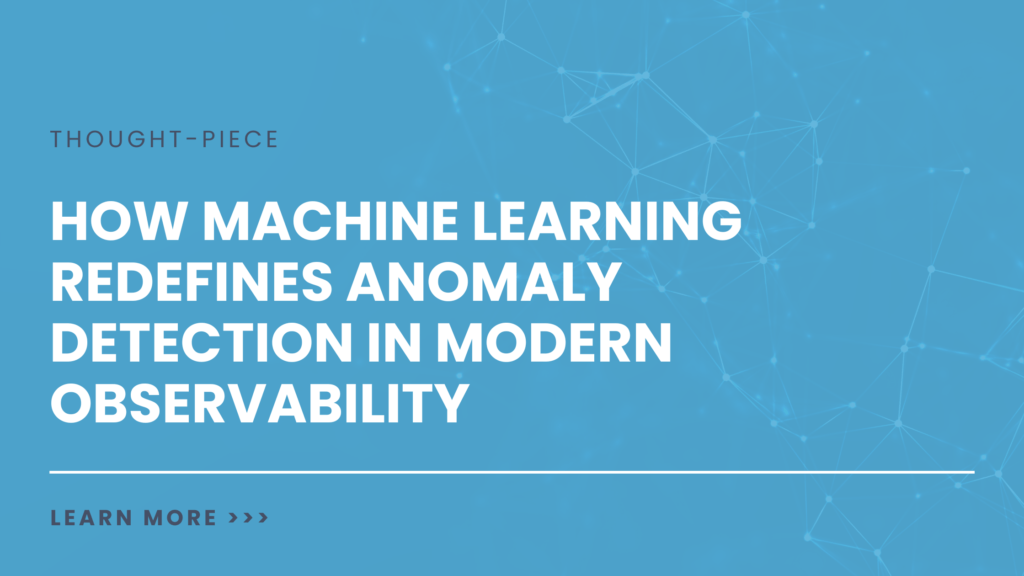Proactive Incident Management: A New Era of Intelligent System Monitoring
When a production system fails at 3 AM, the effectiveness of your incident management strategy becomes immediately apparent. Modern incident management goes beyond reactive firefighting—predicting and preventing issues before they impact users. Through advanced observability and intelligent detection capabilities, organizations are transforming how they handle incidents, moving from reactive response to proactive prevention. For teams managing complex cloud environments, effective incident management has become the difference between maintaining reliable services and facing costly downtime.
The Evolution of Incident Management
The journey from traditional incident response to modern incident management marks a fundamental shift in how organizations handle system reliability. While traditional approaches relied on basic monitoring and manual response procedures, today’s incident management combines observability, AI-powered detection, and automated response capabilities to create a more sophisticated and proactive approach.
The journey from traditional monitoring to modern observability marks a fundamental shift in how we understand and manage our systems. While monitoring traditionally focused on predefined metrics and known failure modes, observability extends far beyond this limited scope. It enables organizations to understand the internal states of their systems through external outputs, providing deeper insights into previously unknown issues and potential problems.
Key Components of Modern Incident Management
Effective incident management in today’s complex systems requires a comprehensive approach that incorporates multiple detection and response capabilities. Modern incident management platforms must identify and respond to various types of system behavior:
- Response time deviations from historical patterns
- Unexpected resource usage spikes
- Elevated error rates
- Connection limit breaches
- Database replication issues
- Throughput fluctuations
These anomalies can be categorized into three distinct types:
- Outliers: Brief, sporadic irregularities in data collection
- Event shifts: Sudden or systematic changes from established behavioral patterns
- Drifts: Gradual, long-term shifts in data trends
Advancing Incident Management Through Technology
When incident management is enhanced with comprehensive observability practices, organizations gain several critical advantages:
1. Early Warning System
The combination allows teams to identify potential issues before they escalate into critical incidents. By analyzing patterns across metrics, logs, and traces, modern observability platforms can detect subtle anomalies that might otherwise go unnoticed until they impact end users.
2. Context-Rich Insights
Observability provides the crucial context needed to understand why anomalies occur. Instead of simply knowing that a metric has deviated from its normal range, teams can trace the root cause through distributed systems and understand the broader impact on business services.
3. Automated Response Capabilities
With artificial intelligence and machine learning capabilities, modern observability platforms can detect anomalies and initiate automated responses based on learned patterns and predefined playbooks.
The Role of AI in Modern Observability
Artificial intelligence is revolutionizing how we approach both anomaly detection and observability. AI-powered systems can:
- Process massive volumes of telemetry data in real-time
- Identify complex patterns that human operators might miss
- Predict potential issues before they occur
- Provide natural language interfaces for querying system state
- Automate routine troubleshooting tasks
Best Practices for Incident Management Implementation
To establish an effective incident management strategy:
- Establish Baseline Metrics: Understand what “normal” looks like for your systems across different time periods and conditions.
- Implement Comprehensive Instrumentation: Ensure your systems generate appropriate telemetry data across all critical components.
- Define Clear Thresholds: Set meaningful anomaly detection thresholds that balance sensitivity and actionability.
- Enable Cross-Team Collaboration: Create shared contexts and workflows that allow different teams to collaborate effectively when investigating anomalies.
- Continuously Refine: Regularly review and update detection rules and thresholds based on real-world experience and changing system behaviors.
The Future of Incident Management
As technology landscapes grow more complex, incident management will continue to evolve. Organizations that effectively implement modern incident management practices will be better positioned to:
- Maintain high service reliability
- Reduce mean time to resolution (MTTR)
- Optimize resource utilization
- Improve customer experience
- Drive business value through technological resilience
Conclusion
The convergence of anomaly detection and observability represents a powerful approach to modern incident management. By leveraging these capabilities together, organizations can move from reactive to proactive operations, ensuring better service reliability and customer satisfaction. As we continue to push the boundaries of what’s possible with artificial intelligence and machine learning, this partnership will only grow stronger, enabling even more sophisticated approaches to system monitoring and management.
The future of incident management lies not just in detecting what’s wrong, but in understanding why it’s wrong and predicting what might go wrong next. The combination of anomaly detection and observability provides the foundation for this future, enabling organizations to stay ahead of potential issues and maintain the highest levels of service quality.
Leading observability platforms like FusionReactor already demonstrate this evolution, combining AI-powered analysis with comprehensive system telemetry to deliver proactive incident management capabilities.













